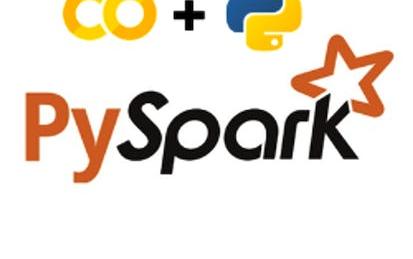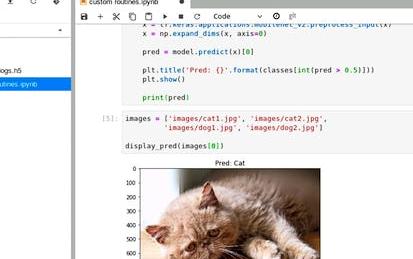

Our Courses

Analytic Combinatorics
Analytic Combinatorics teaches a calculus that enables precise quantitative predictions of large combinatorial structures. This course introduces the symbolic method to derive functional relations among ordinary, exponential, and multivariate generating functions, and methods in complex analysis for deriving accurate asymptotics from the GF equations. All the features of this course are available for free.
-
Course by

-
 Self Paced
Self Paced
-
 17 hours
17 hours
-
 English
English

Introduction to Predictive Modeling
Welcome to Introduction to Predictive Modeling, the first course in the University of Minnesota’s Analytics for Decision Making specialization. This course will introduce to you the concepts, processes, and applications of predictive modeling, with a focus on linear regression and time series forecasting models and their practical use in Microsoft Excel.
-
Course by

-
 Self Paced
Self Paced
-
 12 hours
12 hours
-
 English
English

Predictive Analytics: Basic Modeling Techniques
What is Predictive Analytics? These methods lie behind the most transformative technologies of the last decade, that go under the more general name Artificial Intelligence or AI. In this course, the focus is on the skills that will allow you to fit a model to data, and measure how well it performs. We will be doing enough data science so that you get hands-on familiarity with understanding a dataset, fitting a model to it, and generating predictions.
-
Course by

-
 26
26
-
 English
English

Introduction to Astrophysics
Learn about the physical phenomena at play in astronomical objects and link theoretical predictions to observations.
-
Course by

-
 Self Paced
Self Paced
-
 18
18
-
 English
English

Physical and Advanced Side-Channel Attacks
Software-based and physical side-channel attacks have similar techniques. But physical attacks can observe properties and side effects that are usually not visible on the software layer. Thus, they are often considered the most dangerous side-channel attacks. In this course, we learn both about physical side-channel attacks but also about more advanced software-based side channels using prefetching and branch prediction. You will work with these attacks and understand how to mitigate them.
-
Course by

-
 Self Paced
Self Paced
-
 English
English

PredictionX: Omens, Oracles & Prophecies
This course is an overview of divination systems, ranging from ancient Chinese bone burning to modern astrology.
-
Course by

-
 Self Paced
Self Paced
-
 English
English

PredictionX: Lost Without Longitude
Explore the history of navigation, from stars to satellites.
-
Course by

-
 Self Paced
Self Paced
-
 60
60
-
 English
English

Mining Quality Prediction Using Machine & Deep Learning
In this 1.5-hour long project-based course, you will be able to: - Understand the theory and intuition behind Simple and Multiple Linear Regression. - Import Key python libraries, datasets and perform data visualization - Perform exploratory data analysis and standardize the training and testing data. - Train and Evaluate different regression models using Sci-kit Learn library. - Build and train an Artificial Neural Network to perform regression. - Understand the difference between various regression models KPIs such as MSE, RMSE, MAE, R2, and adjusted R2. - Assess the performance of regressio
-
Course by

-
 Self Paced
Self Paced
-
 2 hours
2 hours
-
 English
English

Interpretable Machine Learning Applications: Part 1
In this 1-hour long project-based course, you will learn how to create interpretable machine learning applications on the example of two classification regression models, decision tree and random forestc classifiers. You will also learn how to explain such prediction models by extracting the most important features and their values, which mostly impact these prediction models. In this sense, the project will boost your career as Machine Learning (ML) developer and modeler in that you will be able to get a deeper insight into the behaviour of your ML model.
-
Course by

-
 3 hours
3 hours
-
 English
English

Cloud Machine Learning Engineering and MLOps
Welcome to the fourth course in the Building Cloud Computing Solutions at Scale Specialization! In this course, you will build upon the Cloud computing and data engineering concepts introduced in the first three courses to apply Machine Learning Engineering to real-world projects. First, you will develop Machine Learning Engineering applications and use software development best practices to create Machine Learning Engineering applications. Then, you will learn to use AutoML to solve problems more efficiently than traditional machine learning approaches alone.
-
Course by

-
 12 hours
12 hours
-
 English
English

Python Data Products for Predictive Analytics
Python data products are powering the AI revolution. Top companies like Google, Facebook, and Netflix use predictive analytics to improve the products and services we use every day. Take your Python skills to the next level and learn to make accurate predictions with data-driven systems and deploy machine learning models with this four-course Specialization from UC San Diego. This Specialization is for learners who are proficient with the basics of Python. You’ll start by creating your first data strategy.
-
Course by

-
 Self Paced
Self Paced
-
 English
English

Improving Your Statistical Questions
This course aims to help you to ask better statistical questions when performing empirical research. We will discuss how to design informative studies, both when your predictions are correct, as when your predictions are wrong. We will question norms, and reflect on how we can improve research practices to ask more interesting questions.
-
Course by

-
 Self Paced
Self Paced
-
 18 hours
18 hours
-
 English
English

Introduction to Business Analytics and Information Economics
This specialization targets learners who seek to understand the opportunities that data and analytics present for their organization and those interested in the value of and implications for data as an asset to their organization. Individuals who manage data and make decisions about how data can be leveraged in their organization will find this specialization of particular value. Businesses run on data, and data offers little value without analytics.
-
Course by

-
 Self Paced
Self Paced
-
 English
English

Multiple Regression Analysis in Public Health
Biostatistics is the application of statistical reasoning to the life sciences, and it's the key to unlocking the data gathered by researchers and the evidence presented in the scientific public health literature. In this course, you'll extend simple regression to the prediction of a single outcome of interest on the basis of multiple variables. Along the way, you'll be introduced to a variety of methods, and you'll practice interpreting data and performing calculations on real data from published studies.
-
Course by

-
 Self Paced
Self Paced
-
 14 hours
14 hours
-
 English
English

Deploy Models with TensorFlow Serving and Flask
In this 2-hour long project-based course, you will learn how to deploy TensorFlow models using TensorFlow Serving and Docker, and you will create a simple web application with Flask which will serve as an interface to get predictions from the served TensorFlow model.
-
Course by

-
 Self Paced
Self Paced
-
 3 hours
3 hours
-
 English
English

Deploy a BigQuery ML Customer Churn Classifier to Vertex AI for Online Predictions
This is a self-paced lab that takes place in the Google Cloud console. In this lab, you will train, tune, evaluate, explain, and generate batch and online predictions with a BigQuery ML XGBoost model. You will use a Google Analytics 4 dataset from a real mobile application, Flood it!, to determine the likelihood of users returning to the application. You will generate batch predictions with your BigQuery ML model as well as export and deploy it to Vertex AI for online predictions.
-
Course by

-
 Self Paced
Self Paced
-
 2 hours
2 hours
-
 English
English

Machine Learning for Telecom Customers Churn Prediction
In this hands-on project, we will train several classification algorithms such as Logistic Regression, Support Vector Machine, K-Nearest Neighbors, and Random Forest Classifier to predict the churn rate of Telecommunication Customers.
-
Course by

-
 Self Paced
Self Paced
-
 3 hours
3 hours
-
 English
English

PredictionX: John Snow and the Cholera Epidemic of 1854
An in-depth look at the 1854 London cholera epidemic in Soho and its importance for the field of epidemiology.
-
Course by

-
 Self Paced
Self Paced
-
 English
English

Introduction to Machine Learning: Supervised Learning
In this course, you’ll be learning various supervised ML algorithms and prediction tasks applied to different data. You’ll learn when to use which model and why, and how to improve the model performances. We will cover models such as linear and logistic regression, KNN, Decision trees and ensembling methods such as Random Forest and Boosting, kernel methods such as SVM. Prior coding or scripting knowledge is required. We will be utilizing Python extensively throughout the course.
-
Course by

-
 Self Paced
Self Paced
-
 40 hours
40 hours
-
 English
English

Building Cloud Computing Solutions at Scale
With more companies leveraging software that runs on the Cloud, there is a growing need to find and hire individuals with the skills needed to build solutions on a variety of Cloud platforms. Employers agree: Cloud talent is hard to find.
-
Course by

-
 Self Paced
Self Paced
-
 English
English

Communicating Data Science Results
Important note: The second assignment in this course covers the topic of Graph Analysis in the Cloud, in which you will use Elastic MapReduce and the Pig language to perform graph analysis over a moderately large dataset, about 600GB. In order to complete this assignment, you will need to make use of Amazon Web Services (AWS). Amazon has generously offered to provide up to $50 in free AWS credit to each learner in this course to allow you to complete the assignment.
-
Course by

-
 Self Paced
Self Paced
-
 8 hours
8 hours
-
 English
English

Demand Analytics
Welcome to Demand Analytics - one of the most sought-after skills in supply chain management and marketing! Through the real-life story and data of a leading cookware manufacturer in North America, you will learn the data analytics skills for demand planning and forecasting. Upon the completion of this course, you will be able to 1. Improve the forecasting accuracy by building and validating demand prediction models. 2.
-
Course by

-
 Self Paced
Self Paced
-
 9 hours
9 hours
-
 English
English

Graduate Admission Prediction with Pyspark ML
In this 1 hour long project-based course, you will learn to build a linear regression model using Pyspark ML to predict students' admission at the university. We will use the graduate admission 2 data set from Kaggle. Our goal is to use a Simple Linear Regression Machine Learning Algorithm from the Pyspark Machine learning library to predict the chances of getting admission. We will be carrying out the entire project on the Google Colab environment with the installation of Pyspark. You will need a free Gmail account to complete this project.
-
Course by

-
 Self Paced
Self Paced
-
 2 hours
2 hours
-
 English
English

AI Platform: Qwik Start
This is a self-paced lab that takes place in the Google Cloud console. In this lab you train and deploy a TensorFlow model to AI Platform for serving (prediction). Watch these short videos Harness the Power of Machine Learning with AI Platform and AI Platform: Qwik Start - Qwiklabs Preview.
-
Course by

-
 Self Paced
Self Paced
-
 1 hour
1 hour
-
 English
English

Custom Prediction Routine on Google AI Platform
Please note: You will need a Google Cloud Platform account to complete this course.
-
Course by

-
 Self Paced
Self Paced
-
 2 hours
2 hours
-
 English
English



